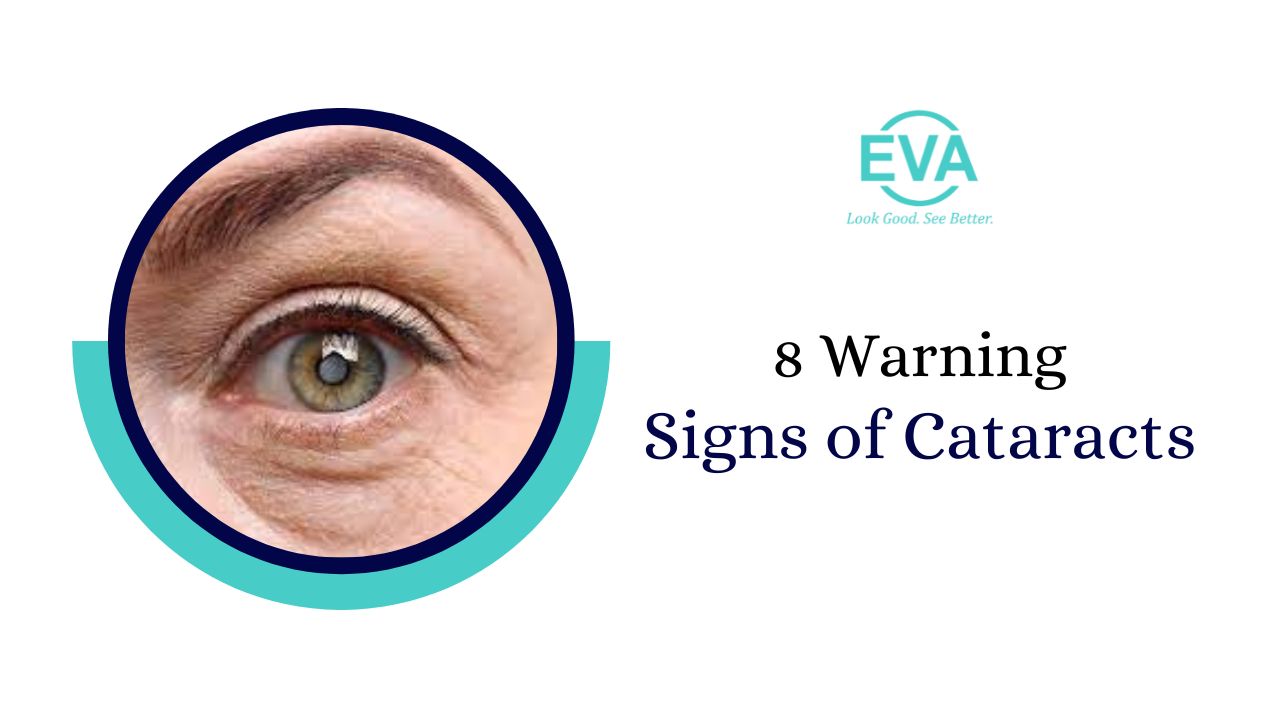Identifying the 8 Warning Signs of Cataracts

Our vision is one of the most precious gifts we have, allowing us to experience the world in all its glory. Unfortunately, as we age, various eye conditions can affect our vision, one of the most common being cataracts. Cataracts are a leading cause of vision impairment, but the good news is that they are treatable. To catch them early and seek timely treatment, it's essential to be aware of the warning signs.
8 Cataract Warning Signs To Watch Out For
In this blog, we'll explore eight crucial warning signs of cataracts and what you can do if you notice them.
1. Blurred Vision
Blurred vision is often the first and most noticeable symptom of cataracts. If you find that your vision is becoming increasingly blurry, especially when trying to read, drive, or watch television, it might be a sign of cataracts developing. This blurriness can start subtly and worsen over time, making it essential not to dismiss it as a natural consequence of aging.
2. Faded Colors
Colors may begin to appear less vibrant and vivid as cataracts progress. You might notice that once-bright colors appear washed out or yellowed. This can make it challenging to distinguish between colors and can impact your ability to enjoy the beauty of the world around you.
3. Glare Sensitivity
Cataracts can cause increased sensitivity to glare from bright lights, sunlight, or oncoming headlights while driving at night. If you find yourself squinting or needing to shield your eyes from glare more often than before, it's a warning sign that your eyes may have cataracts.
4. Halos Around Lights
Seeing halos or rings around lights, such as streetlights or car headlights, can be another sign of cataracts. This visual phenomenon occurs due to the scattering of light by the cloudy lens of the eye. It can be particularly troublesome when driving at night, making it difficult to see clearly.
5. Double Vision
Double vision, also known as diplopia, can be a symptom of cataracts. You might see two overlapping images of a single object, which can be disorienting and make daily tasks challenging. Double vision can occur in one or both eyes, depending on the extent of cataract development.
6. Changes in Prescription
If you wear glasses or contact lenses, you may notice that your prescription needs to be updated more frequently as cataracts develop. Cataracts can change the refractive properties of your eye, causing fluctuations in your vision and the need for different corrective lenses.
7. Difficulty with Night Vision
Cataracts can significantly impact your ability to see clearly at night. You may experience reduced night vision, making it harder to navigate in low-light conditions. This can be particularly concerning for activities such as driving, where visibility is crucial for safety.
8. Frequent Changes in Eyeglass Prescriptions
If you find that you need to change your eyeglass prescription more frequently than in the past, it could be due to cataracts. The changes in your vision caused by cataracts may lead to a constant need for updated prescriptions as your eyes struggle to focus correctly.
When to Seek Help
Recognizing these warning signs of cataracts is the first step towards preserving your vision. If you experience one or more of these symptoms, it's essential to schedule an appointment with an eye specialist or ophthalmologists for a comprehensive eye examination. They will be able to diagnose the presence and extent of cataracts and recommend appropriate treatment options.
Cataract surgery is the most common and effective treatment for cataracts. During the procedure, the cloudy lens is removed and replaced with an artificial intraocular lens (IOL). Cataract surgery is typically a quick and safe outpatient procedure that can significantly improve your vision and quality of life.
It's worth noting that cataracts can develop at different rates in each eye, and one eye may be affected more than the other. Therefore, even if you experience symptoms in only one eye, it's crucial to have both eyes examined to determine the best course of action.
Conclusion
Cataracts are a common age-related eye condition that can significantly impact your vision and overall quality of life. However, with early detection and timely treatment, you can regain clear vision and continue to enjoy the world around you. Recognizing the warning signs of cataracts, such as blurred vision, faded colors, and glare sensitivity, is the first step in preserving your eyesight.
If you or a loved one experience any of these symptoms, don't delay seeking professional help from an eye specialist doctor in Delhi. Regular eye examinations, especially as you age, can catch cataracts early and ensure that you receive the necessary treatment to maintain clear and vibrant vision for years to come. Your eyes are your windows to the world—keep them in focus and enjoy all the beauty it has to offer.

